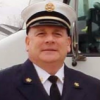Firefighting has always been a dangerous job. But our perception of the danger doesn’t always align with reality. Put another way: What’s killing most of us isn’t fires or explosions or technical rescue operations gone wrong. Too often, what’s killing us is our failure to take steps that are entirely our responsibility.
Recently I had the opportunity to attend a forceful program on firefighter health and wellness titled, appropriately, “What Is Killing Us?” This one-day program was created and run by the Loveland-Symmes (OH) Fire Department and was emceed by Chief Tim Sendelbach of the Loveland (CO) Fire Rescue Authority. The speakers included:
- Dr. Sara Jahnke, director and a senior scientist with the Center for Fire, Rescue & EMS Health Research at the National Development & Research Institutes
- Chief Bryan Frieders, CEO and president of the Firefighter Cancer Support Network
- Ret. Chief Patrick J. Kenny, international speaker and author of Taking the Cape Off: How to Lead Through Mental Illness, Unimaginable Grief and Loss
- Dr. Kenneth Fent, team lead on the CDC/NIOSH National Firefighter Registry
- Dr. James J. Augustine, a medical director with fire and rescue agencies in Georgia, Florida and Ohio, and a member of the EMS Eagles Global Alliance.
There’s a lot to share from this packed day of presentations, but let’s focus on five key themes that emerged as factors contributing to a health and wellness crisis in the fire service — yet largely preventable.
#1: We’re afraid to talk about firefighter health and wellness.
The fire service has come a long way in addressing fitness, nutrition and illness and injury prevention, but many of us are still afraid to have open, honest conversations about our health. How many firefighters do you know who won’t go beyond minimum-required medical testing because they’d “rather not know” or they’re worried a diagnosis will put them on light duty? How many officers are reluctant to confront someone on their crew who they know is struggling with cardio fitness, alcohol use, or even just working a second job to the point of fatigue?
We must be willing to talk honestly with our medical professionals about our habits and our risks. And we must work to create a culture where medical issues aren’t shameful and ignoring them isn’t glorified.
#2: We’re failing to take personal responsibility for what’s killing us.
When we’re not hiding from the medical issues, we’re often consciously ignoring them. Firefighters have a deep fatalistic streak. That’s not surprising, and in fact it may help us cope with the trauma of the job. But it works against us when there are health and wellness issues well within our control.
Dr. Jahnke, a leader in identifying behaviors that lead to firefighter death, stressed that we each own our health and wellness choices. Specifically, she mentioned the need to understand how vital good sleep is to our health. The book Why We Sleep by Matthew Walker, PhD, was mentioned by several speakers as required reading for all firefighters.
Beyond sleep, Dr. Jahnke laid out the factors that are right in front of us yet seem to elude capture. Really, how many times will we have to hear about getting a full cardiopulmonary work-up so we have a baseline and then setting goals necessary for our survival? Other factors include:
- Getting to our target weight
- Achieving cardiovascular fitness
- Using alcohol reponsibly
- Eliminating tobacco
- Establishing work-life balance
Going further, Dr. Jahnke emphasized how much our negative and positive health and wellness behaviors impact those we lead, our families and our friends.
#3: We’re not doing enough to reduce our cancer risk.
Chief Frieders shared several real-life examples of firefighters lost to occupational cancer in their 20s and 30s. These are cancers the general population doesn’t usually have to worry about until much later in life. On an intellectual level, we all know cancer is a health crisis in the fire service. But Chief Frieders emphasized that we’re not taking that academic knowledge and converting it to action. Every department needs comprehensive policies on turnout cleaning and storage, required use of SCBA and PPE, and understanding that the IDLH environment exists during overhaul.
But it’s not just about having the policies. It’s about being a strong enough leader to train on and enforce those policies. As a certified incident safety officer, I took Chief Frieders’ message to heart. When an ISO sees a ladder truck about to tangle with live wires, an IC setting an operation that fails to consider flow path, or a firefighter failing to take burn time into account before going through a door, the ISO notifies the IC, or physically restrains the firefighter, and calls a stop to the operation. ISOs must have the same awareness, and not hesitate to exert their fireground authority, when it comes to practices like strict use of SCBA during all phases of interior work, clean cab practices, on-scene hose-down, and mandatory gear washing after certain operations. What kills us doesn’t always happen in a split second. It happens over time. It’s up to department leaders, oftentimes, to save our members from themselves.
I also can’t overemphasize the valuable work that the Firefighter Cancer Support Network performs. Every probie, firefighter, line officer and chief should be aware of the information the network provides on cancer prevention and treatment, including good policy and practice, expert advice for those who are diagnosed, guidance for how firefighters can assist a brother or sister firefighter facing a cancer diagnosis, and available resources and referrals.
Another essential tool for fighting cancer in the fire service is better data collection and reporting. Dr. Fent leads the CDC/NIOSH National Firefighter Registry, which was designed to monitor occupational risk factors and cancer outcomes among U.S. firefighters. Every firefighter should participate (testing has begun and the open enrollment is planned in the fall). The system will protect all data, privacy, and maintain participant confidentiality; no firefighter should worry that information provided can be tracked back to them.
#4: We’re pretending COVID is over.
It’s impossible to talk about what’s killing firefighters over the past two years and not talk about COVID. More than half of line-of-duty deaths in 2020 were attributed to COVID. Further, many firefighters who survived the disease may have symptoms of long COVID, which can contribute to other health risks.
At the time of the conference, hospitalizations and deaths were trending down, but since then, they have started to pick up again. Addressing the current wave, Dr. Augustine advises that there is greater susceptibility to serious impact among seniors and the unvaccinated and that, while greater numbers of vaccinated and boosted individuals may get one of the variants, the effects will be far less severe. He also notes that because we were isolated for an extended period and now find ourselves going out much more, we are experiencing an immunity gap with regard to other illnesses and infections. For example, Influenza A is occurring with greater frequency, even though we would normally be coming out of flu season. The bottom line? Responders should maintain COVID PPE practices based on local conditions.
Dr. Augustine provides regular COVID updates on the Center for Fire, Rescue & EMS Health Research Facebook page. I encourage you to tune in for practical, up-to-date information that’s provided in layperson’s terms.
#5: We’re hiding behind a “cape” that won’t allow us to ask for help.
Drawing on his personal family tragedies, including the loss of his son to mental illness, Chief Kenny gave the most emotionally stirring presentation I have ever heard at a firefighter conference. While his story is unique, his message applies to all firefighters. The personality traits and self-image that make us great firefighters can also work against our relationships with family, friends and other department members. Chief Kenny uses the cape as a metaphor — it’s the part of us that struggles to reconcile being a “hero” with the understanding that sometimes we can’t save everyone; we can’t make everything OK. It’s OK to need help. By taking the cape off, we protect our physical and behavioral health, bring ourselves closer to those who love us, and strengthen the bonds we have with friends and our crews.
Wrapping It Up
With the data and information available to us today, we have a tremendous opportunity to recognize and acknowledge the factors that interfere with our physical and behavioral health. We have the tools to turn poor health choices into good ones. We can learn to spot warning indicators in ourselves and others and access the strength in ourselves to change behavior or call on outside resources without fear.
Throughout the “What Is Killing Us?” program, participants discussed the perceived stigma associated with asking for help. But rather than using this as an excuse, presenters and attendees concluded the only stigma is a self-imposed one. Enforcing good cancer prevention policies, practicing heart healthy habits at home and at the station, and recognizing when we need help and seeking that help — it’s all within our control.














